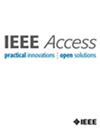HgbNet:从不规则电子病历预测血红蛋白水平/贫血程度
IF 3.6
3区 计算机科学
Q2 COMPUTER SCIENCE, INFORMATION SYSTEMS
引用次数: 0
摘要
使用电子健康记录(EHR)预测病人的血红蛋白水平或贫血程度是一种非侵入性的快速方法。然而,由于电子健康记录具有不规则的多变量时间序列性质,通常包含大量缺失值和不规则的时间间隔,这给预测带来了挑战。为了解决这些问题,我们引入了 HgbNet,这是一个专门用于处理不规则电子病历数据的模型。HgbNet 包含一个带有缺失指示器的 NanDense 层,用于处理缺失值。受临床医生决策过程的启发,该模型采用了三种注意机制来考虑局部不规则性和全局不规则性。我们使用两个真实世界的数据集对所提出的方法进行了评估。在所有测试场景中,HgbNet都优于最佳基线结果,在血红蛋白水平预测方面,HgbNet的R2得分分别为0.867美元和0.861美元;在两个数据集的用例1下,贫血程度预测的F1得分分别为0.855美元和0.843美元。此外,我们还分析了不规则时间间隔的长度对预测性能的影响,并在用例 2 中提高了 HgbNet 在长间隔时的性能。这些发现凸显了从电子病历数据中估算血红蛋白水平和贫血程度的可行性,将 HgbNet 定位为一种有效的无创贫血诊断解决方案,有可能提高全球数百万受影响人群的生活质量。本文章由计算机程序翻译,如有差异,请以英文原文为准。
HgbNet: Predicting Hemoglobin Level/Anemia Degree From Irregular EHR
Predicting a patient’s hemoglobin level or degree of anemia using Electronic Health Records (EHRs) is a non-invasive and rapid approach. However, it presents challenges due to the irregular multivariate time series nature of EHRs, which often contain significant amounts of missing values and irregular time intervals. To address these issues, we introduce HgbNet, a model specifically designed to process irregular EHR data. HgbNet incorporates a NanDense layer with a missing indicator to handle missing values. Inspired by clinicians’ decision-making processes, the model employs three kinds of attention mechanisms to account for both local irregularity and global irregularity. We evaluate the proposed method using two real-world datasets across two use cases. HgbNet outperforms the best baseline results across all test scenarios, achieving an R2 score of
$0.867~\pm $
0.003 and
$0.861~\pm $
0.003 for hemoglobin level prediction, and an F1 score of
$0.855~\pm $
0.005 and
$0.843~\pm $
0.005 for anemia degree prediction under usecase 1 across two datasets. Additionally, we analyze the effect of the length of irregular time intervals on prediction performance and improve HgbNet’s performance at long intervals in usecase 2. These findings highlight the feasibility of estimating hemoglobin levels and anemia degree from EHR data, positioning HgbNet as an effective non-invasive anemia diagnosis solution that could potentially enhance the quality of life for millions of affected individuals worldwide.
求助全文
通过发布文献求助,成功后即可免费获取论文全文。
去求助
来源期刊

IEEE Access
COMPUTER SCIENCE, INFORMATION SYSTEMSENGIN-ENGINEERING, ELECTRICAL & ELECTRONIC
CiteScore
9.80
自引率
7.70%
发文量
6673
审稿时长
6 weeks
期刊介绍:
IEEE Access® is a multidisciplinary, open access (OA), applications-oriented, all-electronic archival journal that continuously presents the results of original research or development across all of IEEE''s fields of interest.
IEEE Access will publish articles that are of high interest to readers, original, technically correct, and clearly presented. Supported by author publication charges (APC), its hallmarks are a rapid peer review and publication process with open access to all readers. Unlike IEEE''s traditional Transactions or Journals, reviews are "binary", in that reviewers will either Accept or Reject an article in the form it is submitted in order to achieve rapid turnaround. Especially encouraged are submissions on:
Multidisciplinary topics, or applications-oriented articles and negative results that do not fit within the scope of IEEE''s traditional journals.
Practical articles discussing new experiments or measurement techniques, interesting solutions to engineering.
Development of new or improved fabrication or manufacturing techniques.
Reviews or survey articles of new or evolving fields oriented to assist others in understanding the new area.
 求助内容:
求助内容: 应助结果提醒方式:
应助结果提醒方式:


